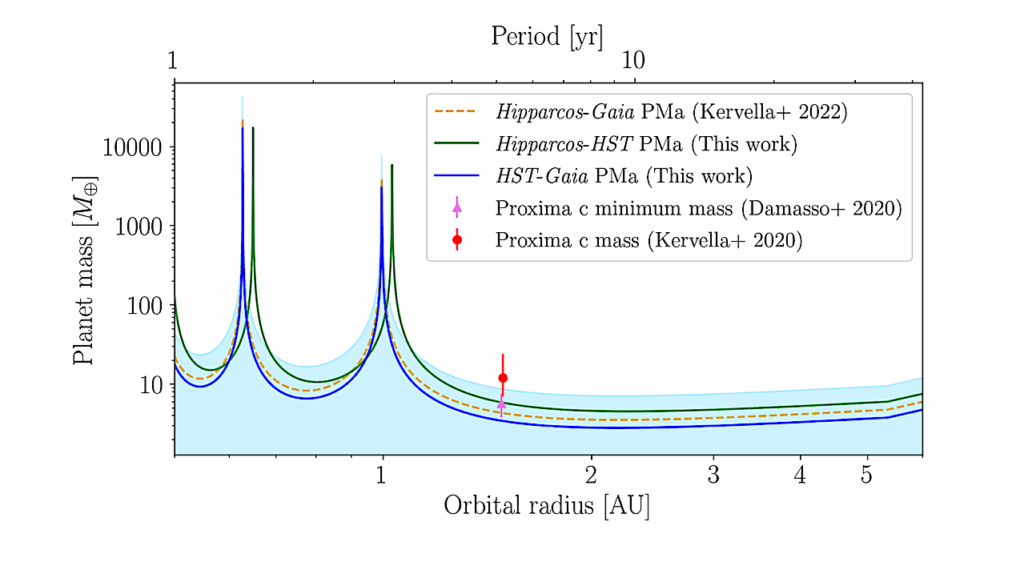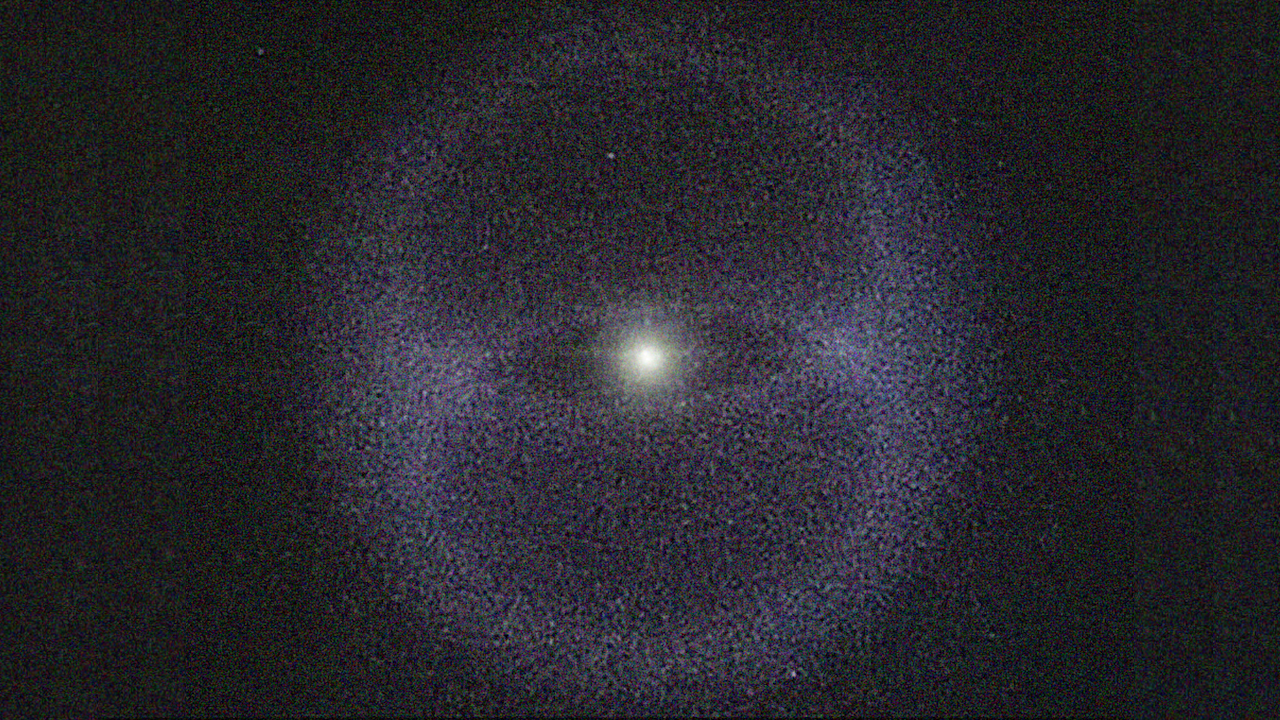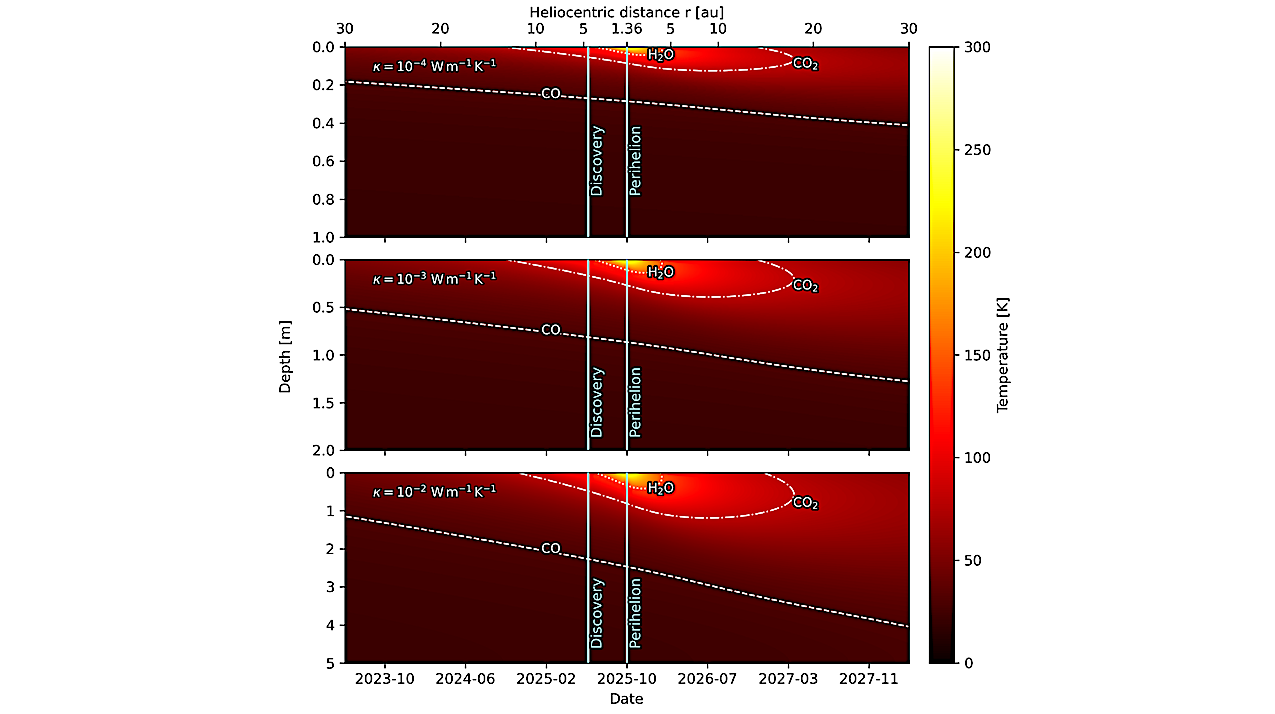Now Reading: Interstellar Comet 3I/ATLAS: Evidence for Galactic Cosmic Ray Processing
-
01
Interstellar Comet 3I/ATLAS: Evidence for Galactic Cosmic Ray Processing
Interstellar Comet 3I/ATLAS: Evidence for Galactic Cosmic Ray Processing


Schematic illustration of interstellar comet 3I/ATLAS showing the expected stratigraphy of an irradiated nucleus. Galactic cosmic ray irradiation over several Gyr alters the outer ∼15–20 m, producing a CO2-rich crust through CO-to-CO2 conversion, ongoing CO release from the breakdown of irradiated organics, an organic-rich refractory mantle with a red spectral slope, and compact amorphous ice characterized by low diffusivity and high thermal conductivity. Beneath this layer lies a pristine, unprocessed interior shielded from GCRs, whose composition and structure remain unknown but are expected to differ markedly from the irradiated crust. — astro-ph.EP
Spectral observations of 3I/ATLAS (C/2025 N1) with JWST/NIRSpec and SPHEREx reveal an extreme CO2 enrichment (CO2/H2O = 7.6+-0.3) that is 4.5 sigma above solar system comet trends and among the highest ever recorded.
This unprecedented composition, combined with substantial absolute CO levels (CO/H2O = 1.65+-0.09) and red spectral slopes, provides direct evidence for galactic cosmic ray (GCR) processing of the outer layers of the interstellar comet nucleus.
Laboratory experiments demonstrate that GCR irradiation efficiently converts CO to CO2 while synthesizing organic-rich crusts, suggesting that the outer layers of 3I/ATLAS consist of irradiated material which properties are consistent with the observed composition of 3I/ATLAS coma and with its observed spectral reddening.
Estimates of the erosion rate of 3I/ATLAS indicate that current outgassing samples the GCR-processed zone only (depth ~15-20 m), never reaching pristine interior material. Outgassing of pristine material after perihelion remains possible, though it is considered unlikely. This represents a paradigm shift: long-residence interstellar objects primarily reveal GCR-processed material rather than pristine material representative of their primordial formation environments.
With 3I/ATLAS approaching perihelion in October 2025, immediate follow-up observations are critical to confirm this interpretation and establish GCR processing as a fundamental evolutionary pathway for interstellar objects.
R. Maggiolo, F. Dhooghe, G. Gronoff, J. de Keyser, G. Cessateur
Comments: 13 pages, 5 figures, submitted to The Astrophysical Journal
Subjects: Earth and Planetary Astrophysics (astro-ph.EP); Astrophysics of Galaxies (astro-ph.GA)
Cite as: arXiv:2510.26308 [astro-ph.EP] (or arXiv:2510.26308v1 [astro-ph.EP] for this version)
https://doi.org/10.48550/arXiv.2510.26308
Focus to learn more
Submission history
From: Romain Maggiolo
[v1] Thu, 30 Oct 2025 09:51:23 UTC (877 KB)
https://arxiv.org/abs/2510.26308
Astrobiology, Astrochemistry, Astrogeology,
Stay Informed With the Latest & Most Important News
Previous Post
Next Post
-
 012024 in Review: Highlights from NASA in Silicon Valley
012024 in Review: Highlights from NASA in Silicon Valley -
 02Panasonic Leica Summilux DG 15mm f/1.7 ASPH review
02Panasonic Leica Summilux DG 15mm f/1.7 ASPH review -
 03From Polymerization-Enabled Folding and Assembly to Chemical Evolution: Key Processes for Emergence of Functional Polymers in the Origin of Life
03From Polymerization-Enabled Folding and Assembly to Chemical Evolution: Key Processes for Emergence of Functional Polymers in the Origin of Life -
 04How New NASA, India Earth Satellite NISAR Will See Earth
04How New NASA, India Earth Satellite NISAR Will See Earth -
 05And Thus Begins A New Year For Life On Earth
05And Thus Begins A New Year For Life On Earth -
 06Astronomy Activation Ambassadors: A New Era
06Astronomy Activation Ambassadors: A New Era -
07SpaceX launch surge helps set new global launch record in 2024





















